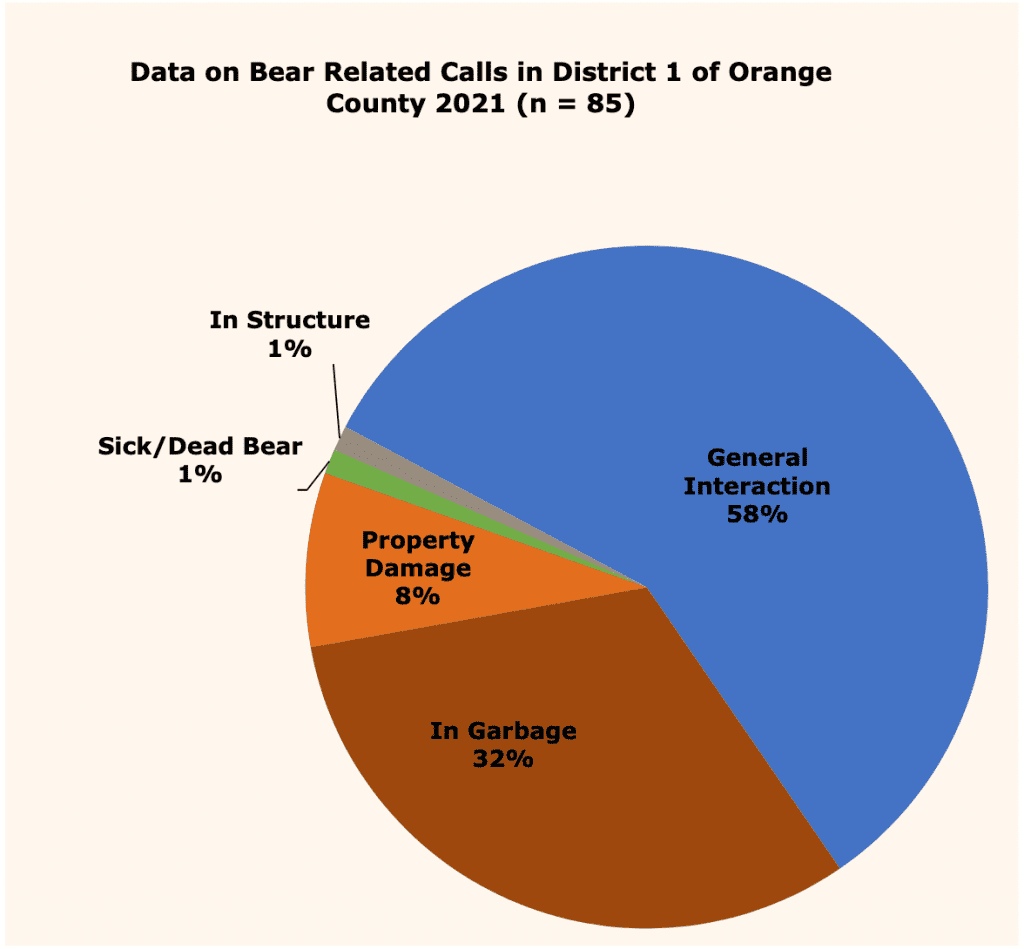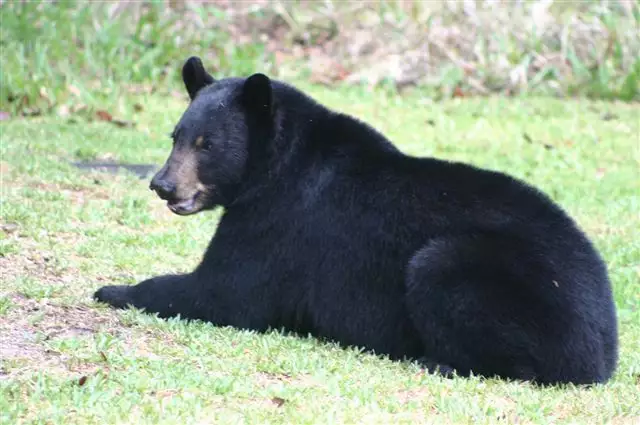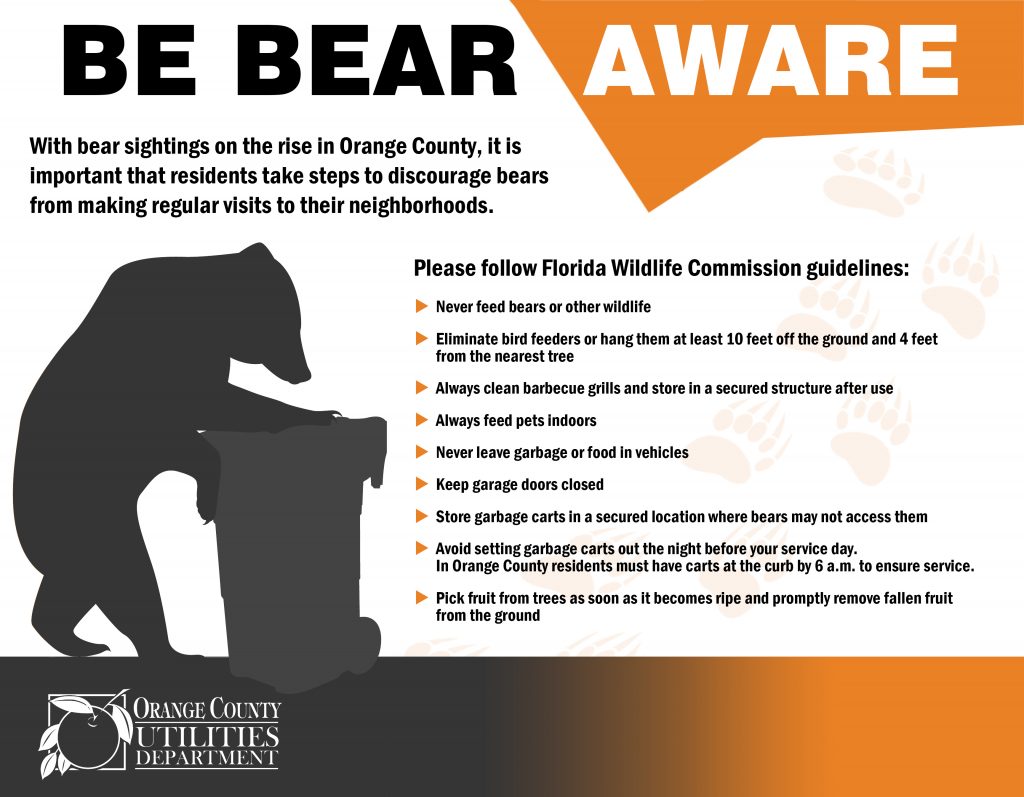Featured image from Unsplash / Kalen Kemp.
Bears by the Numbers
With an estimated population of just over 4,000, the threatened Florida Black Bear is outnumbered by humans by a scale of over 5,000 to 1. Key areas in Central Florida, South Florida, & the Panhandle have the largest portions of the bear population, with over 1,000 bears living in each zone (1). According to the Florida Fish and Wildlife Conservation Commission, the “average annual adult home ranges for bears are 50 to 120 square miles for males, and 10 to 25 square miles for females.”(1) As the human population grows, development encroaches onto bear habitats, increasing the number of bear interactions and encounters as bears their habitats are disturbed. In the year 2000, there were 1,143 bear-related calls statewide. In 2020, there were 5,821 bear-related calls, peaking to 7,000 calls in the years 2013-2014. Historically, the top three reasons for bear-related calls are general interactions, bears in garbage, and property damage, in that order, as seen in this graphic regarding 2021 bear-related calls (1).

Bears 101
While the largest recorded black bear in Florida weighed 760 lbs., black bears typically fall between 130 to 350 lbs., with females tending to be substantially smaller than males. Despite their weight and size, only about 5% of their diet comes from meat. A majority of their diet consists of plant matter, including fruits and nuts, like acorns, hickory, palmetto, holly, and pokeweed berries (1). These plant-powered beasts are the only species of bear found in Florida, and are not easily distinguished from other species of black bears. However, black bears in the Southeastern United States can be distinguished from other black bears by their coat, which is sometimes seen with ‘blazes’ on their chest, or varying muzzle colors. As far as habitat, the Florida Black Bear prefers those with fruit and nut trees that offer food, and dense understories that allow for shelter and ease of travel (1).


Living with the Bears
To reduce human-bear interactions, there are a number of preventative measures that can be taken. As a large portion of human-bear interactions involve food or garbage. As a precaution, wildlife, pet, and human food should be properly stored indoors or in bear-resistant containers. For those living in areas with a higher concentration of bears, bear-proof waste containers can be used to prevent bears from picking through garbage containers. In fact, in 2019, Seminole County initiated a $750,000 project that would supply 6,200 households living in the Urban Bear Management Area with bear-resistant waste containers.
For those living in Florida, it is important to be ‘bear aware’ as human-bear encounters continue to increase in frequency. While black bears are typically not aggressive, it is always best to keep distance between you and bears, and to never approach them. If you find yourself in a situation where you’re in close proximity to a bear, you should calmly stop movement before backing away from the bear slowly (1).

How to Help
To help the Florida Black Bear, you can support organizations such as the FWC or Bear Warriors United. In addition, FWC offers regional and statewide volunteer opportunities for those looking for a way to get involved. Other ways to get involved include encouraging your local community to become BearWise, or by recording bear sightings with the FWC.
For more information on Bear Warriors United, visit www.facebook.com/pg/bearwarriorsunited/posts/
For more information on the Florida Black Bear, or on how to live BearWise, visit MyFWC.com/BearWise.
For volunteer opportunities, visit myfwc.com/get-involved/volunteer/
To record bear sightings, visit app.myfwc.com/fwri/blackbear/
Sources
- “The Florida Black Bear”. Florida Fish and Wildlife Commission. https://myfwc.com/wildlifehabitats/wildlife/bear/








